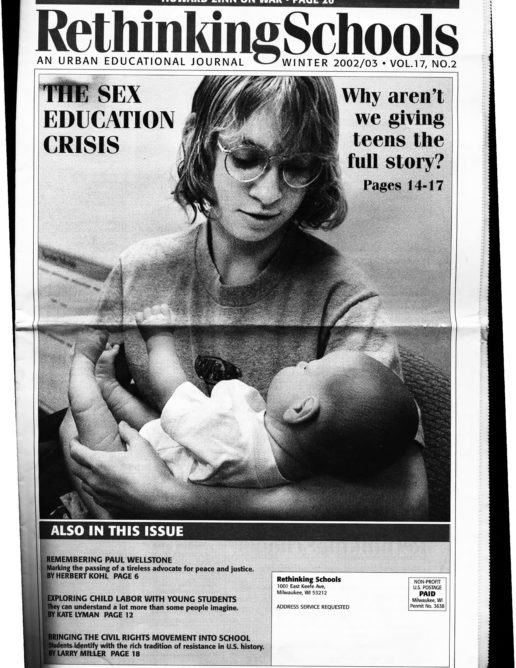Teaching Ideas 17.2
For all of the following, it might help to also read George Capaccio’s article on the effects of the U.N. sanctions against Iraq, “How Many Must Die?” at www.rethinkingschools.org/archive/13_03/iraq.shtml.
- Have students examine recent newspapers that discuss the possibility of war with Iraq. Is Howard Zinn right? Do these articles ignore the realities of war? If so, why? Visit www.iraqjournal.org and compare the reporting with mainstream media.
- Write a dialogue poem between a U.S. policymaker or journalist and someone who will be hurt if the United States attacks Iraq. For a model, see “Two Women” (p. 112, Rethinking Our Classrooms, Vol. 1) or “Two Young Women” (p. 152, Rethinking Globalization.)
- Write interior monologues from the standpoints of various individuals contemplating this war: Iraqi civilians, U.S. or Iraqi soldiers, mothers of U.S. or Iraqi soldiers, Iraqi schoolchildren, anti-war activists, etc.
- Go to the website, www.dqc.org/~ben/index1.htm, that includes photos of the human reality of the bombing of Afghanistan. Copy these off for students and ask them to choose one photo and to write from the point of view of the victim or a member of the victim’s family. They might complete this as a letter to President Bush or another proponent of the war. Students might write other presidents from the standpoint of war’s victims. See also: “A Dossier on Civilian Victims of United States’ Aerial Bombing of Afghanistan,” by University of New Hampshire professor, Marc Herold, www.cursor.org/stories/civilian_deaths.htm.
- See the Rethinking Globalization column, “Thinking in Puctures.” Have students complete metaphorical drawings based on Howard Zinn’s article and other research about the possible war against Iraq.

